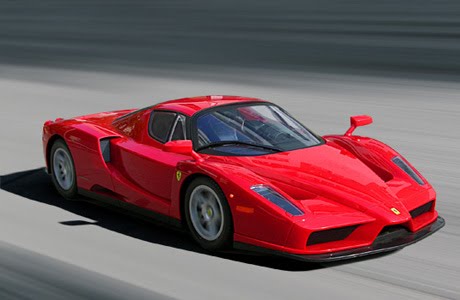Porsche Carrera GT, manufactured by Porsche of Germany, is priced at $440,000 dollars. It is well worth its price if we count the 5.7 litre V10 engine producing 612 DIN (605 SAE) horsepower (450 kW) and the acceleration from 0 to 100 km/h (62.5 mph) in 3.9 seconds, touching a maximum speed of 330 km/h (205 mph).
 In June 1998, Porsche designers came up with the idea of creating a high-performance racecar designed specifically for the 24 Hours of Le Mans, which a Porsche had won that year. But due to rising costs and concerns over its high-powered competitor, the Enzo Ferrari, Porsche scrapped its plans for a racecar. Instead, the company created a supercar that was engineered for the track but designed for the road.
In June 1998, Porsche designers came up with the idea of creating a high-performance racecar designed specifically for the 24 Hours of Le Mans, which a Porsche had won that year. But due to rising costs and concerns over its high-powered competitor, the Enzo Ferrari, Porsche scrapped its plans for a racecar. Instead, the company created a supercar that was engineered for the track but designed for the road.The Carrera GT was finally unveiled at the 2003 Geneva Auto Show. It was the first limited-production supercar Porsche had introduced since unveiling the 959 in 1983.
Proving that you don't mess with a good thing, Porsche updated its 2005 Carrera GT only slightly. The company mounted a glass screen between the safety bars, added a seat-height adjustment and made a few other minor changes. But otherwise, the 2005 Carrera GT remains the same the original 2003 model.
Brakes F/R: ABS, vented disc/vented disc
Tires F-R: 265/35 ZR19 - 335/30 ZR20
Driveline: Rear Wheel Drive
Engine
Type: V10
Displacement cu in (cc): 350 (5733)
Power bhp (kW) at RPM: 605(450) / 8000
Torque lb-ft (Nm) at RPM: 437(590) / 5750
Redline at RPM: 8400
Exterior
Length × Width × Height in: 181.6 × 75.6 × 45.9
Weight lb (kg): 3043 (1380)
Performance
Acceleration 0-62 mph s: 3.9
Top Speed mph (km/h): 205 (330)
Fuel Economy EPA city/highway mpg (l/100 km): 10/16 (n.a.)
 |
| Porsche Carrera GT |
 |
| Porsche Carrera GT |
 |
| Porsche Carrera GT |
 |
| Porsche Carrera GT |
 |
| Porsche Carrera GT |
 |
| Porsche Carrera GT |
 |
| Porsche Carrera GT |





























































